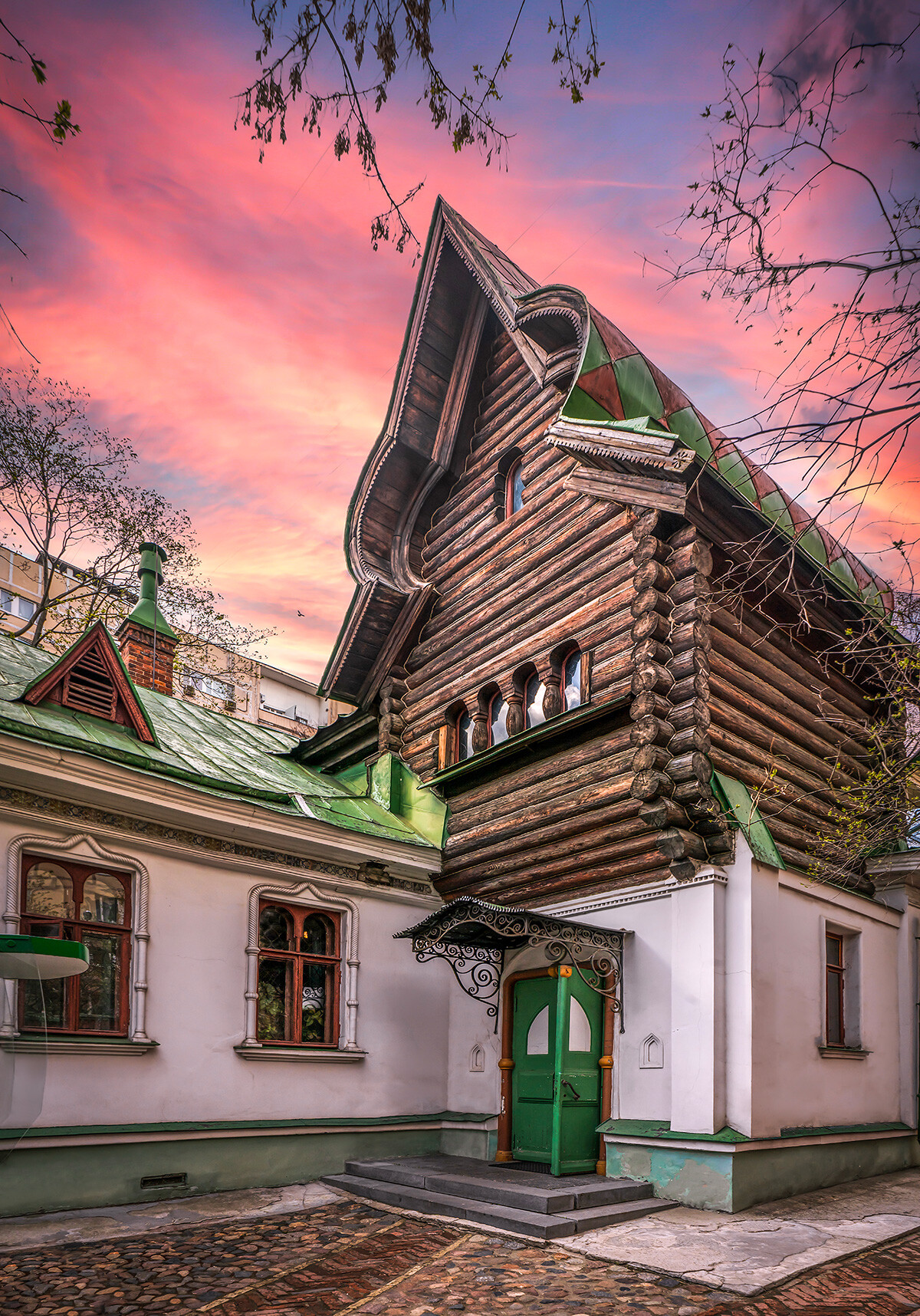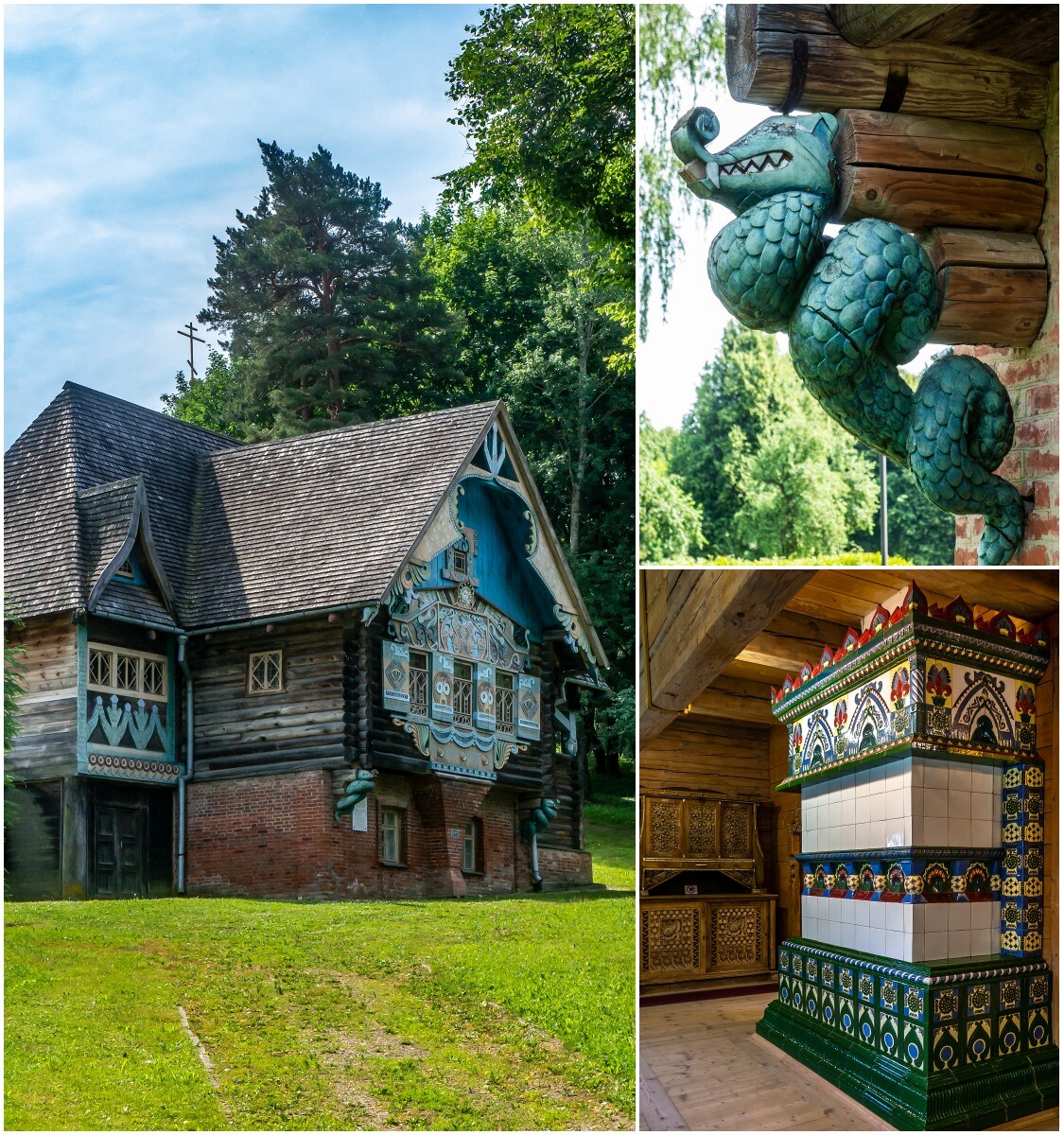13 most beautiful ‘TEREM’ wooden palaces in Russia (PHOTOS)

What is a ‘terem’ actually? It’s a wooden palace, the one that resembles palaces from Russian fairy tales. It has a fanciful silhouette, rich carved decor and a gable roof.
Most of them were built at the turn of the 19th-20th centuries, when the so-called ‘Russian style’ was in vogue. More often, wealthy manufacturers or merchants (or even rich peasants) built such houses as their countryside residences (‘dacha’ as Russians would call it).
Architect Ivan Ropet built a wooden palace as a pavilion of the Russian Empire at the 1878 ‘World Expo’ in Paris. Since then, the ‘terem’ has become a recognizable visiting card of Russia.
 Sketch of the Ropet's pavillion at the 1878 ‘World Expo’ in Paris
Sketch of the Ropet's pavillion at the 1878 ‘World Expo’ in Paris
Once traveling through Kostroma Region’s remote villages, photographer Maria Savina saw one of these terems. She was so impressed by its rare beauty that she spent the next two years on expeditions all over Russia in search of similar buildings.
She took hundreds of photos of the most impressive buildings, giving birth to the project and the book called ‘Terems of Russia’ (The first volume, dedicated to the most beautiful wooden treasures of Central Russia and the Volga region was released in Russian in Eksmo publishing house in 2024).
Here are just a few of them.
1. Terem in Astashovo (Kostroma Region)

This is, perhaps, one of the most famous terems in Russia right now. Built in 1897 by local peasant Martyan Sazonov, the project was based on a sketch by Ivan Ropet himself. In the 2010s, enthusiasts restored the dilapidated terem and turned it into a Russian-style hotel.
2. Ropet bathhouse in Abramtsevo estate (Moscow Region)

The Abramtsevo estate near Moscow belonged to Savva Mamontov, a major industrialist. And it was a real ‘art residence’, as we would call it today. Mamontov invited the most famous artists from the Vasnetsov brothers to Ilya Repin to stay and work there. And architect Ivan Ropet, who made terems famous all over the world, built such a fabulous bathhouse on the territory of the estate.
3. Viktor Vasnetsov house in Moscow

“Something between a modern peasant hut and an ancient princely palace,” is how famous singer Fyodor Chaliapin used to rave about this house. Artist Viktor Vasnetsov painted plots from Russian folklore and fairy-tale and, thanks to him, the aesthetics of the Russian style was largely formed. He made the project of his own house in the Russian style and this terem was built in 1894. Today, it’s the house museum of the painter.
4. Bugrov’s dacha in Volodarsk (Nizhny Novgorod Region)

Nikolai Bugrov, a hereditary flour merchant, was so influential that he was even dubbed "the uncrowned king of Nizhny Novgorod". It is not known who exactly built the house for him. But, it is known that even the Minister of Finance of tsarist Russia Sergey Witte visited this dacha. And Bugrov persuaded him to hold the large-scale All-Russian Industrial and Art Exhibition of 1896 not in Moscow, but in Nizhny Novgorod.
5. Terem in Kulebaki (Nizhny Novgorod Region)

This house is the main attraction of the small town of Kulebaki. So much so that it's even depicted on the town's coat of arms. The terem was built in the late 19th century as the House for Folk Entertainment for the Kulebaki Mining Plant workers.
6. Bakhteyev house in Kazan (Tatarstan Republic)

This amazing pink terem in Kazan was built in 1903-1906 and belonged to Safa Bakhteev, a haberdashery merchant. The current terem is a restored version of the original one, largely suffered under a big fire. Many terems in Tatarstan have elements of traditional Tatar ornaments mixed into the Russian style.
7. Terem with mermaids in Gorokhovets (Vladimir Region)

The house of merchant Fyodor Prishletsov, an honorary citizen of Gorokhovets, is an example of a mixture of the European Art Nouveau and the Russian style. The main feature of the terem, apart from its unusual shape, is the carved platbands, which depict fantastic creatures: mermaids and lions. By the way, it is now a residential house.
8. Gordeev house in Rybinsk (Yaroslavl Region)

It is truly a wooden palace, not even a mansion. The patterned plate bands are decorated in the Russian Baroque style. Its owner, Semyon Gordeev, got rich in the bread and real estate trade. After his death in 1905, the house was rented and, in Soviet times, it was splitted for communal apartments. Today, the house is residential and is mainly inhabited by artists who have been restoring and renovating the building.
9. Summer club of the nobility (Ryazan)

This lace terem was built in the Lower Garden of Ryazan In 1905. This territory once belonged to a local millionaire Gavrila Ryumin. The building was erected by the local noble assembly for their summer gatherings.
10. Sergei Malyutin terem in Flyonovo (Smolensk Region)

This fairy-tale house has carved window frames, brackets in the form of the Dragon Gorynych's heads and ovens with painted tiles. It was designed at the turn of the 19th-20th centuries by Sergei Malyutin, an artist and expert in Russian decorative arts and handicrafts. The brick base is laid out in the form of "chicken legs", like a Baba Yaga hut out of Russian fairy tales. Maria Tenisheva, a patron of the arts and lover of all things Russian, ordered this house. And besides it, Malyutin built a whole complex of buildings in the Russian style on the territory of her Smolensk estate.
11. Kalikiny estate in Galich (Kostroma Region)

Built in 1911, the terem belonged to Alexander Kalikin, a representative of a peasant dynasty of tannery manufacturers. The Russian style here was combined with Art Nouveau, which was actively coming into fashion. The main features of the decor are plant ornamentation and a roof with a crest (similar to the one you can see, for example, at the Yaroslavsky railway station in Moscow).
12. Terems in Akhuny (Penza)
 House of merchant Osetrov
House of merchant Osetrov
Since the late 19th century, wealthy merchants, timber traders, officials and manufacturers settled in the quiet picturesque suburb of Penza called Akhuny. They built several terems in the Russian style and three of them, the houses of merchants Osetrov, Zhuravlev and Ashanin, have been well preserved up to this day.
 Left: House of Zhuravlev; right: house of Ashanin
Left: House of Zhuravlev; right: house of Ashanin
They have similar architecture and decor: stone foundations, mezzanines, open terraces, similar pattern of window trim. Since Soviet times, they have been located on the territory of the sanatorium.
13. Luzhin house in Kimry (Tver Region)

In the tsarist era, the Luzhin bread merchants' terem in the town of Kimry was considered so unusual and distinctive that it was featured on postcards with views of the Tver province. The merchant, who traded with St. Petersburg, got the idea of the house from a magazine. He saw a picture of the Peschanka estate in Gatchina near St. Petersburg and was very impressed by the huge round windows. (Sadly, this house has not survived to our days).
 Peschanka estate in Gatchina
Peschanka estate in Gatchina
Today, a shoe store operates in the Kimry terem.


